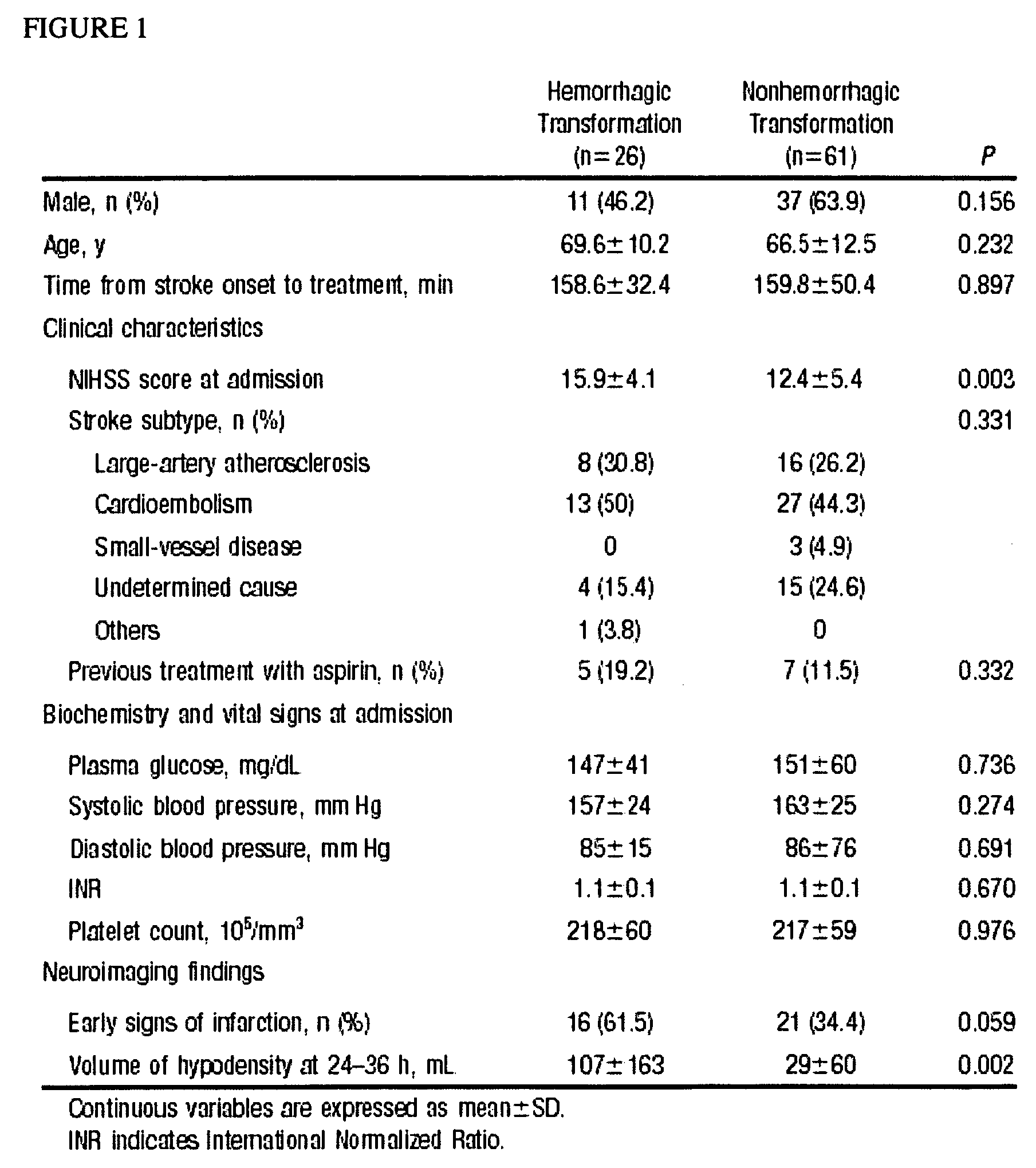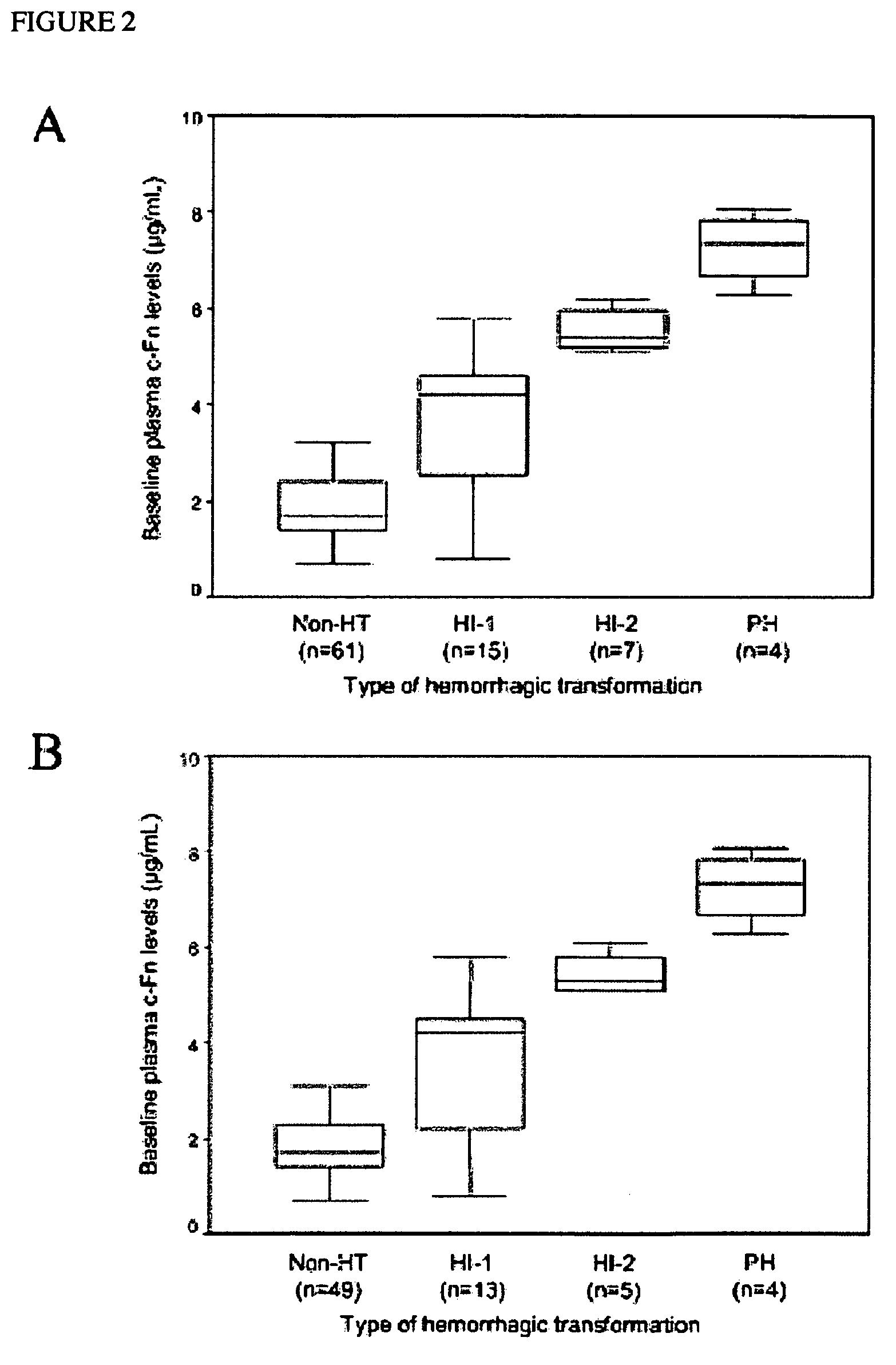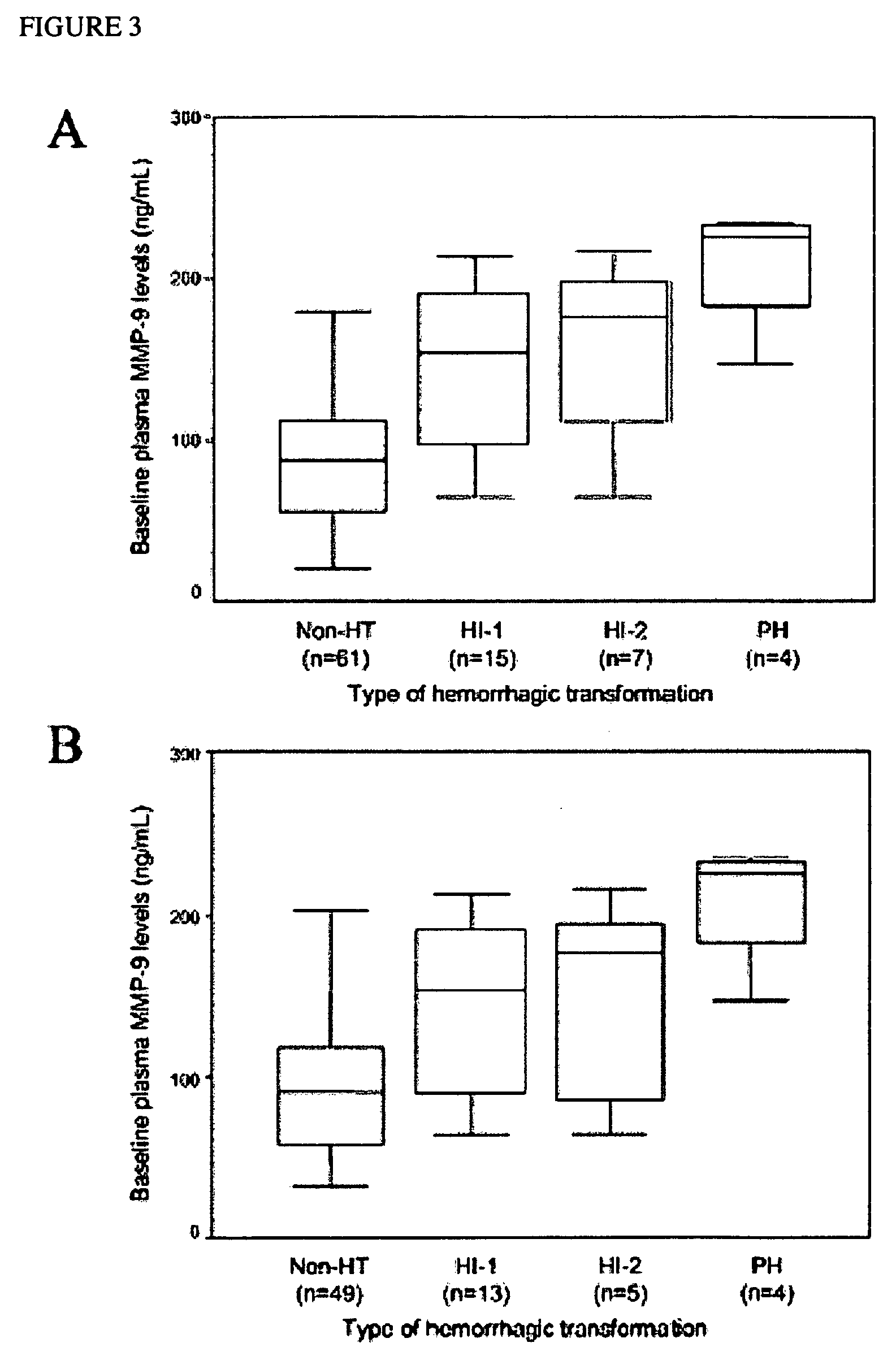Cellular fibronectin as a diagnostic marker in stroke and methods of use thereof
a cell fibronectin and stroke technology, applied in the field of cardiovascular disease and cerebral injury diagnosis and use of diagnostic markers, can solve the problems of sudden weakness, loss of sensation, difficulty in speaking, seeing, walking, etc., and achieve the effect of facilitating stroke patients and additional diagnostic and/or prognostic indicators
- Summary
- Abstract
- Description
- Claims
- Application Information
AI Technical Summary
Benefits of technology
Problems solved by technology
Method used
Image
Examples
example i
[0306]Prospectively studied patients (n=87, 59% men; mean age 67±12 years) received intravenous tPA following the European Cooperative Acute Stroke Study (ECASS) II criteria. 12 Thrombolytic therapy was administered within 6 hours from the beginning of the symptoms at a dose of 0.9 mg / kg body weight, with an upper dose limit of 90 mg per patient. Ten percent of the total dose was given as a bolus over 1 to 2 minutes, followed by a 60-minute infusion of the remaining dose. The mean time to the infusion of the drug was 160—46 minutes. Seventy-one patients received the treatment within 3 hours from onset of symptoms, whereas 16 patients received tPA between 3 and 6 hours within onset of symptoms. Thirty healthy control subjects matched by age and sex (male: 57%; mean age: 63±9 years) and without history of neurological disorders or vascular risk factors were also included in the study. To determine the effect of stroke on the levels of the molecules, plasma c-Fn and MMP-9 concentration...
PUM
| Property | Measurement | Unit |
|---|---|---|
| molecular mass | aaaaa | aaaaa |
| concentration | aaaaa | aaaaa |
| concentration | aaaaa | aaaaa |
Abstract
Description
Claims
Application Information
 Login to View More
Login to View More - R&D
- Intellectual Property
- Life Sciences
- Materials
- Tech Scout
- Unparalleled Data Quality
- Higher Quality Content
- 60% Fewer Hallucinations
Browse by: Latest US Patents, China's latest patents, Technical Efficacy Thesaurus, Application Domain, Technology Topic, Popular Technical Reports.
© 2025 PatSnap. All rights reserved.Legal|Privacy policy|Modern Slavery Act Transparency Statement|Sitemap|About US| Contact US: help@patsnap.com



